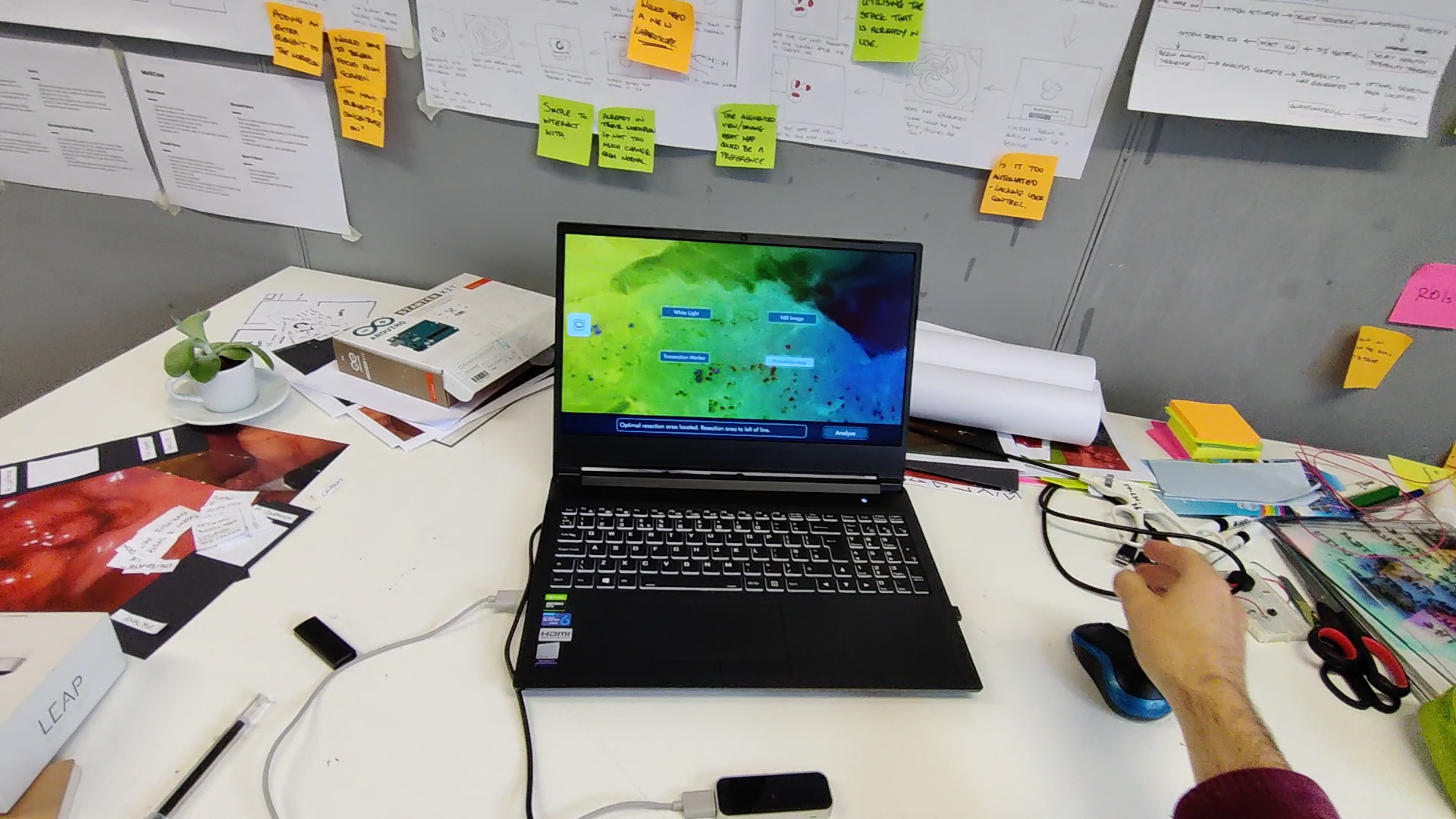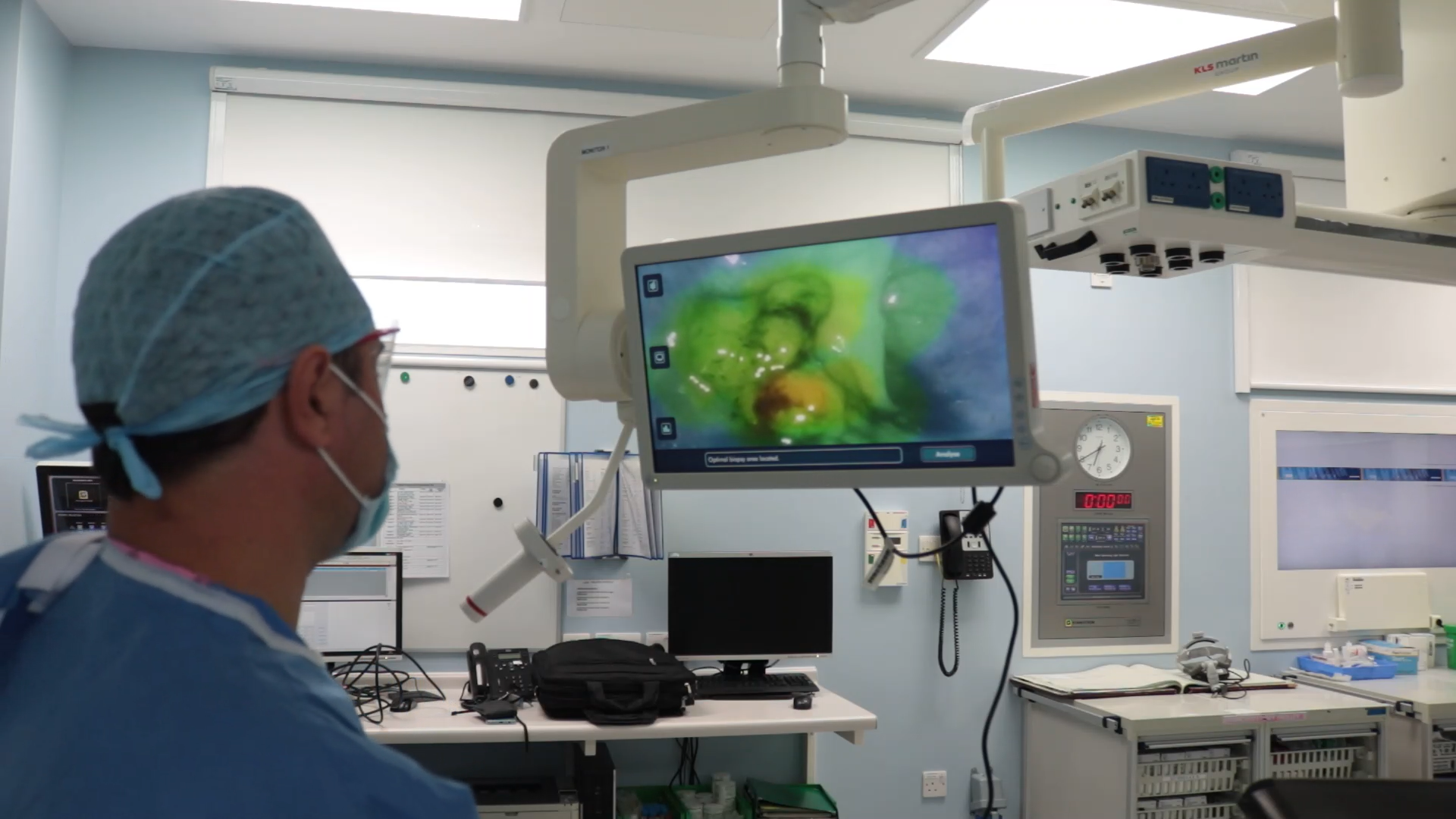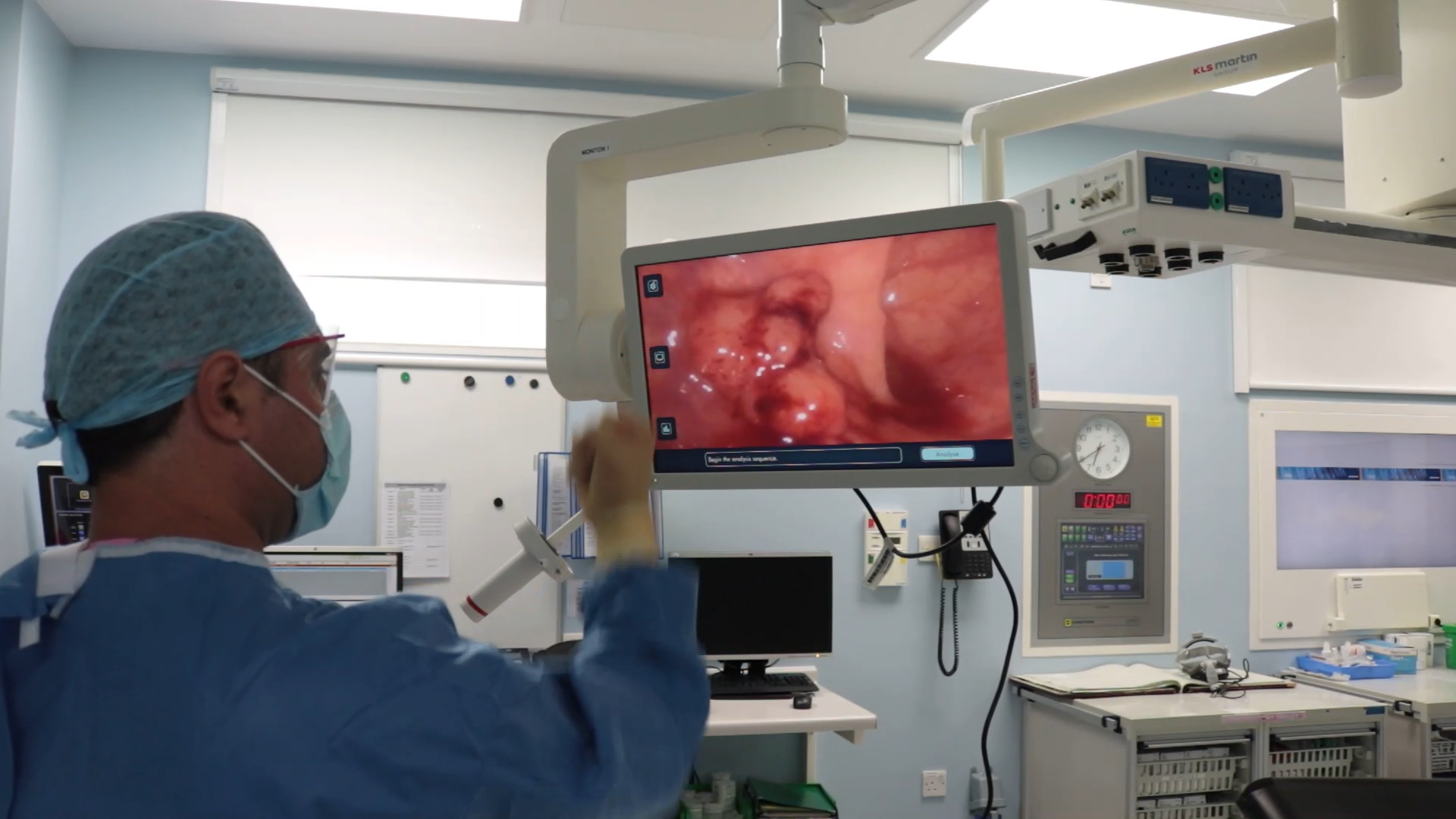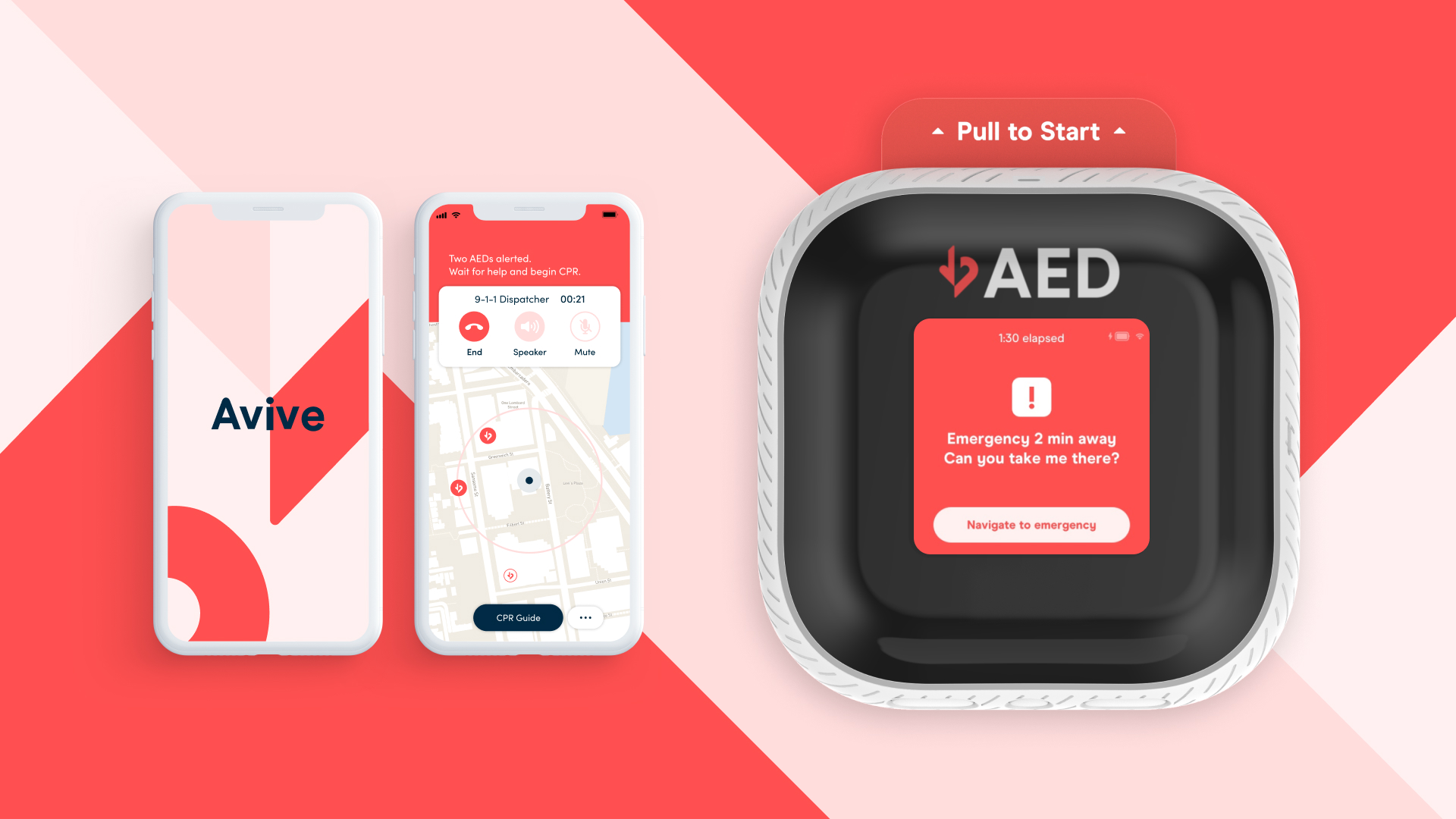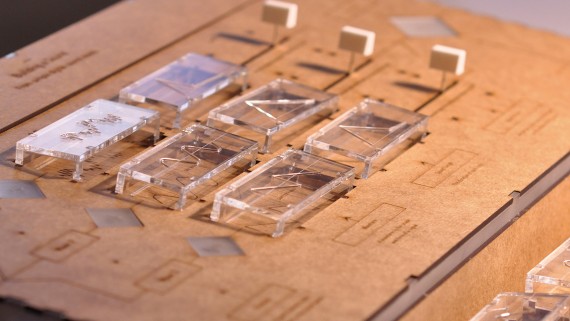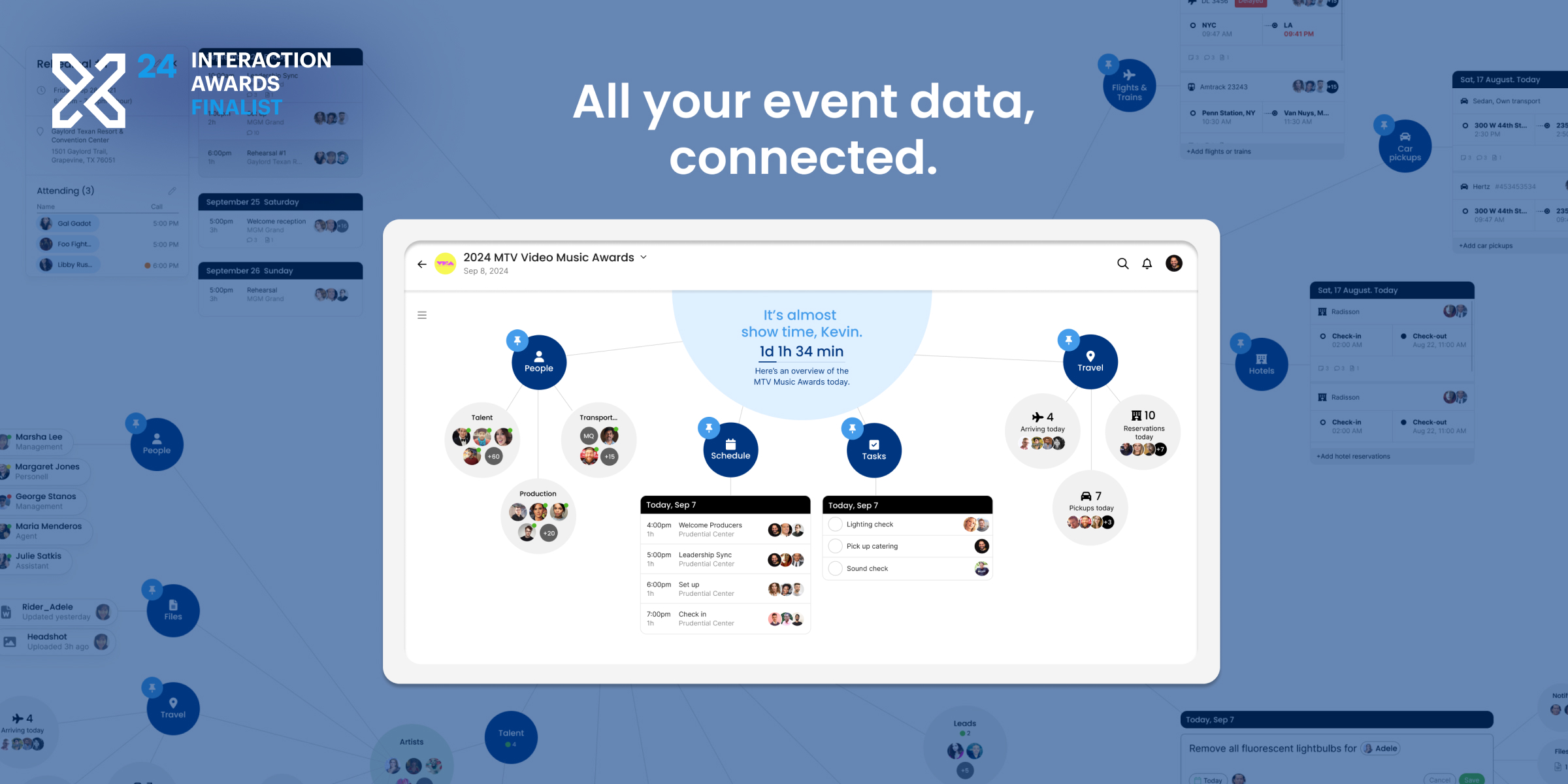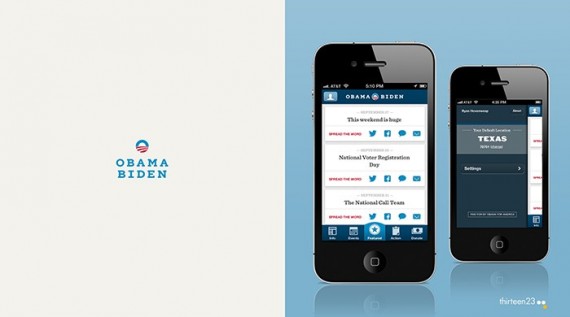Digital Surgery — A Research Probe
Team
Company | Institution
Category
Type
Project description
The aim of this project was to act as an initial research probe into this technology, taking a human centered design approach, to explore how the surgeon’s could interact with a system like this. The two main goals were to: firstly, develop a user interface that could display the decision made by the AI algorithm in an understandable way so that the surgeon could enact on it and secondly, develop a standardised workflow for the biopsy, excision and anastomosis procedures as the key theme in this field is a lack of standardisation. The final design of the system has been developed to be controlled by gestural inputs. In a real world scenario, there would be an accompanying manual input.
A research probe into how human centered design and technology could help positively impact colorectal cancer procedures.
The use of artificial intelligence within the operating theatre will start to become more common practice in the coming years. New software is being developed to act as a confirmatory ‘surgical companion’ to aid in the characterisation of tissue in situ in colorectal procedures. In the diagnosis of tissue, the system will aid the surgeon in locating the optimal biopsy area so that an effective biopsy can be taken. Then in the removal of cancer, it will aid the surgeon in locating the optimal resection area to ensure a healthy anastomosis can be performed. With the overall main goal of a better patient outcome.
The aim of this project was to act as an initial research probe into this technology, taking a human centered design approach, to explore how the surgeon’s could interact with a system like this. The two main goals were to: firstly, develop a user interface that could display the decision made by the AI algorithm in an understandable way so that the surgeon could enact on it and secondly, develop a standardised workflow for the biopsy, excision and anastomosis procedures as the key theme in this field is a lack of standardisation. The final design of the system has been developed to be controlled by gestural inputs. In a real world scenario, there would be an accompanying manual input.
What opportunity was the project addressing?
The use of artificial intelligence within the operating theatre will start to become more common practice in the next five to ten years. New software is being developed to act as a confirmatory ‘surgical companion’ to aid in the characterisation of tissue in situ in colorectal procedures. The newly developed AI system analyses the fluorescent intensity of a dye that is injected intravenously into the patient. The system then gives a probability rating on how cancerous or healthy the tissue is. The aim of this project was to act as an initial research probe into how human centered design and technology could help positively impact colorectal cancer procedures.
Who were you designing for?
This project was conducted for my master’s major project, over a period of three months in conjunction with The Mater Misericordiae University Hospital Digital Surgery Unit. The main user group that I was designing for was surgeon’s who work the indocyanine green dye during surgical procedures. It is used for a number of different procedures but my main focus was on colorectal cancer procedures.
What was the impact?
This project acted as a research probe into this new technology that is being developed through a larger project in the Digital Surgery Unit. Due to the fact that the project is still ongoing, a system like this wouldn’t be implemented for a number of years. The impact of this kind of system has two main benefits: firstly, in the biopsy procedure it would ensure that an optimal biopsy would be taken, reducing the amount of times a patient would have to be brought back in for the same operation due to an inaccurate biopsy. Secondly, in the excision and anastomosis procedure, it would ensure that the surgeon is transecting back to the most healthy tissue to ensure that there is no leakage within the bowel. If leakage did occur, this could cause infection and increase the patients long term treatment of the disease.
Describe your design process applied to the project?
I took a human centered design approach to this project, with a strong focus on co-design relying on the SME’s (the surgeon’s) input to take the design of the system through the iterative stages. I drew on methods from HCI (human computer interaction) and HSI (human system interaction) in relation to cognitive function which enables the user to transform a prescribed task into an effective task to aid in the development of the interaction processes and styles that I could possible apply. These methodologies were the driving forces behind my project but I also incorporated human factors from medical device design as that aided in the research and development of my final design.
A research probe into how human centered design and technology could help positively impact colorectal cancer procedures.
The use of artificial intelligence within the operating theatre will start to become more common practice in the coming years. New software is being developed to act as a confirmatory ‘surgical companion’ to aid in the characterisation of tissue in situ in colorectal procedures. In the diagnosis of tissue, the system will aid the surgeon in locating the optimal biopsy area so that an effective biopsy can be taken. Then in the removal of cancer, it will aid the surgeon in locating the optimal resection area to ensure a healthy anastomosis can be performed. With the overall main goal of a better patient outcome.
The aim of this project was to act as an initial research probe into this technology, taking a human centered design approach, to explore how the surgeon’s could interact with a system like this. The two main goals were to: firstly, develop a user interface that could display the decision made by the AI algorithm in an understandable way so that the surgeon could enact on it and secondly, develop a standardised workflow for the biopsy, excision and anastomosis procedures as the key theme in this field is a lack of standardisation. The final design of the system has been developed to be controlled by gestural inputs. In a real world scenario, there would be an accompanying manual input.
What opportunity was the project addressing?
The use of artificial intelligence within the operating theatre will start to become more common practice in the next five to ten years. New software is being developed to act as a confirmatory ‘surgical companion’ to aid in the characterisation of tissue in situ in colorectal procedures. The newly developed AI system analyses the fluorescent intensity of a dye that is injected intravenously into the patient. The system then gives a probability rating on how cancerous or healthy the tissue is. The aim of this project was to act as an initial research probe into how human centered design and technology could help positively impact colorectal cancer procedures.
Who were you designing for?
This project was conducted for my master’s major project, over a period of three months in conjunction with The Mater Misericordiae University Hospital Digital Surgery Unit. The main user group that I was designing for was surgeon’s who work the indocyanine green dye during surgical procedures. It is used for a number of different procedures but my main focus was on colorectal cancer procedures.
What was the impact?
This project acted as a research probe into this new technology that is being developed through a larger project in the Digital Surgery Unit. Due to the fact that the project is still ongoing, a system like this wouldn’t be implemented for a number of years. The impact of this kind of system has two main benefits: firstly, in the biopsy procedure it would ensure that an optimal biopsy would be taken, reducing the amount of times a patient would have to be brought back in for the same operation due to an inaccurate biopsy. Secondly, in the excision and anastomosis procedure, it would ensure that the surgeon is transecting back to the most healthy tissue to ensure that there is no leakage within the bowel. If leakage did occur, this could cause infection and increase the patients long term treatment of the disease.
Describe your design process applied to the project?
I took a human centered design approach to this project, with a strong focus on co-design relying on the SME’s (the surgeon’s) input to take the design of the system through the iterative stages. I drew on methods from HCI (human computer interaction) and HSI (human system interaction) in relation to cognitive function which enables the user to transform a prescribed task into an effective task to aid in the development of the interaction processes and styles that I could possible apply. These methodologies were the driving forces behind my project but I also incorporated human factors from medical device design as that aided in the research and development of my final design.

